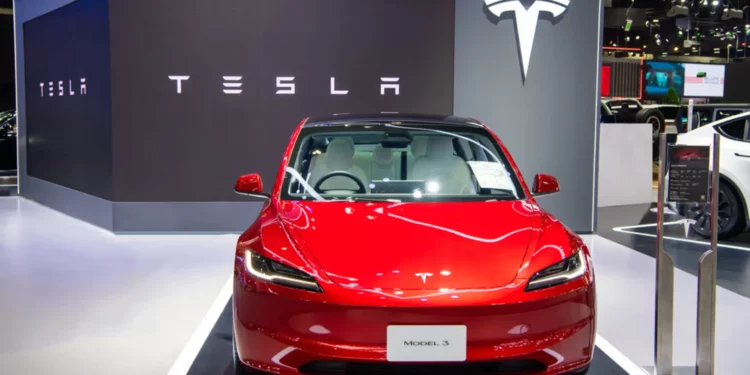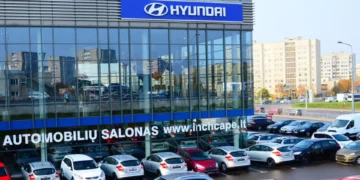Tesla promised that it would start its robotaxi services in selected US areas to compete with Waymo from Alphabet and Cruise from General Motors.
Tesla, a multinational American automotive company, has emphasized that it believes in the future of AI and full self-driving (FSD) technology despite having more than a 70% decline in profits and revenue falling, short of analysts’ estimates.
The company announced on Wednesday that it is increasing its AI training by over 400% in 2024 and will use the increased processing capacity to improve its FSD capabilities this year. By 2025–2026, it anticipates that these developments will open the door for unsupervised FSD and the introduction of robotaxi services.
Elon Musk, the billionaire CEO of Tesla, has promised a fully automated robotaxis, and experts say that 2025 might be the year.
The Texas-based company promised that it would start its robotaxi services in selected US areas to compete with Waymo from Alphabet and Cruise from General Motors.
The name of Tesla’s robotaxi is Cybercab, which will start mass production by next year.
The beta version of FSD currently available in the market has automatic lane changes, highway navigation, and traffic light recognition. However, the problem is it still needs a human to supervise it and not become fully autonomous.
Tesla made its fans excited when it showed its Cybercab model, but the company has not yet produced robotaxis, which is fully automated. FSD Supervised, an advanced driver assistance system, is another product of Tesla.
Mr Musk, during his investor call, stated that Tesla is planning on making unsupervised FSD a paid version to Austin. He added that the company plans to introduce it to many parts of the US by the end of 2025.
After the announcement, Tesla stock increased 4.15% to trade at $405.25 in after-hours trading. The markets closed at 2.265% at $389.10, lowering the company’s valuation to $1.22 trillion.
The company announced its net profit to its shareholders, which was over $2.3 billion during October-December, a 71% reduction from the same period in 2023.
The company delivered 495,570 cars in the last quarter, with an increase of 2.3%. But its annual deliveries were reduced as it delivered only 1.79 million vehicles, which is 1.8 million vehicles less compared to 2023.
When Donald Trump got elected as the US President, Tesla stock prices went up due to market optimism, which increased their earnings report.
After Trump took office for the second time, his prominent supporter, billionaire businessman Mr Musk, is part of the advisory board.
Investors anticipated that Tesla stock would rally after Mr. Trump’s victory since his close ties in the administration could help reduce regulatory scrutiny on the business and business-friendly policies.
Analysts say that Elon Musk anticipated that Tesla’s automotive business would return to its growth spectrum, but the current market does not support that optimism.
Thomas Monteiro, a senior analyst at Investing.com claims that EVs do not have heavy demand in the industry, and the enthusiasm for Tesla is also gone since there has been no innovation in recent years, which has declined its brand image.
Mr. Monteiro claimed that since Musk has a fortunate place in a political bet, he is the most wanted community for Tesla investors.
In the previous quarter, Tesla gave various incentives like discounts on inventory cars and offers for American buyers who purchased through referral. Whereas in China, the company decreased the prices of its best-selling car, the Model Y SUV, before the launch of its revised version, the Model Y Juniper.
Tesla announced that it will return to its growth phase by 2025. However, the rate of growth will depend on many factors, like the production of cars and the macroeconomic environment.has context menu

















